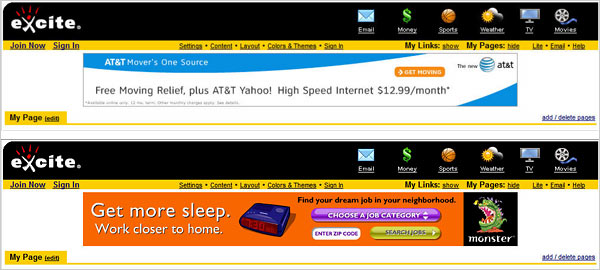If you use Yahoo’s Web search engine to learn about hybrid cars, the site will quietly note that you fit into a group of users it calls “Consciously Cruising.”
If you click on ads for moving van companies, you will join the “Home Hopping” group. Shop for wedding cakes and reception halls and you might be tagged as a future bride or groom.
Earlier this year, Yahoo introduced a computer system that uses complex models to analyze records of what each of its 500 million users do on its site: what they search for, what pages they read, what ads they click on. It then tries to show them advertisements that speak directly to their interests and the events in their lives.
Yahoo and the many other companies building similar systems say the systems are benign because they typically do not collect personal information like names and addresses.
“We are much more conservative than we need to be” in using information about site visitors, said Usama Fayyad, chief data officer at Yahoo.
Still, just how personal even “anonymous” information can be was shown vividly last week as a list of three months of search queries from 657,000 AOL customers began circulating online. Collectively, a person’s Web searches, it turns out, can create an eerily intimate portrait — one that some privacy advocates say should never be assembled and stored in the first place.
Still, Web companies continue refining their techniques. Advertising on search engines is already a $14-billion-a-year business because the ads can be so closely tied to what people are looking for. Yahoo’s system is meant to use search queries and other actions to select ads people see while checking their e-mail and reading other pages.
AOL is working on a similar system to display ads for products related to a person’s Web search history. MSN from Microsoft just introduced technology to do the same. Other companies use systems that bring together information about users from across many sites. Internet companies call this behavioral targeting, and it is based on the insight that knowing what people do online can be more valuable to a marketer than knowing how old they are or what they do for a living.
“Search behavior is the closest thing we have to a window onto people’s intent,” said Jeff Marshall, a senior vice president of Starcom IP, an advertising agency. “When people are gathering information to make a choice, that means they are often going to spend money.”
Many Internet users have no idea that records of their actions are being collected and used. They might find out about these practices only if they read the fine print of Web site privacy policies.
But AOL’s release of search data has already led some privacy advocates and legislators to call for new limits on how Web sites and advertisers keep and use information about online behavior.
AOL has apologized for the release, saying that its research unit had not been authorized to publish the records. It removed the data from its site, but copies are still available online.
Not all of the behavioral marketing involves search engines. Technology from companies like DoubleClick and AOL’s Advertising.com unit allows marketing messages to follow people around the Web.
Starwood Hotels, for example, alerts members of its frequent-guest program to new promotions by placing ads that will be shown only to people who have previously visited its Web site. These ads can find customers in unlikely places, like the vast social networking site MySpace.
While most MySpace users are more likely to spend money on soda and sneakers, some of the site’s 100 million members do stay in Starwood’s Westin or Sheraton hotels and will see the ads.
Cingular Wireless uses a similar approach to advertise to people who have started shopping for a phone.
“You are no longer targeting people you think will be interested in your product,” said Les Kruger, a senior marketing manager at Cingular. “We know based on your behavior that you are in the market, and we can target you as you bounce around the Internet.”
Most of these marketing systems use cookies, unique numbers that a Web site can place on a computer to spot return visitors. Cookies are also used by companies like Advertising.com that place ads and track visitors across many sites.
Shopping sites like Amazon.com use cookies to greet returning customers by name. But many of the targeting systems try to avoid recording personally identifiable information, like a person’s name and address.
















